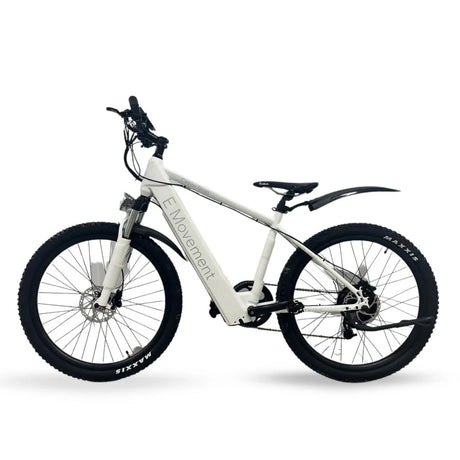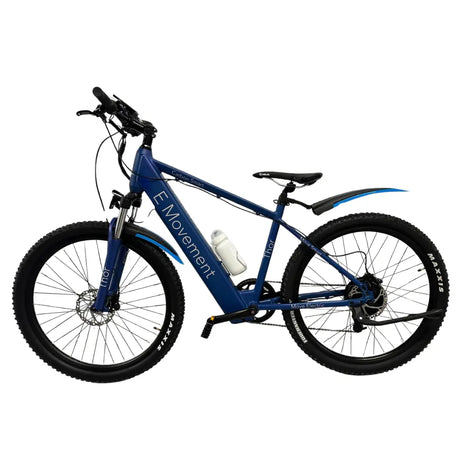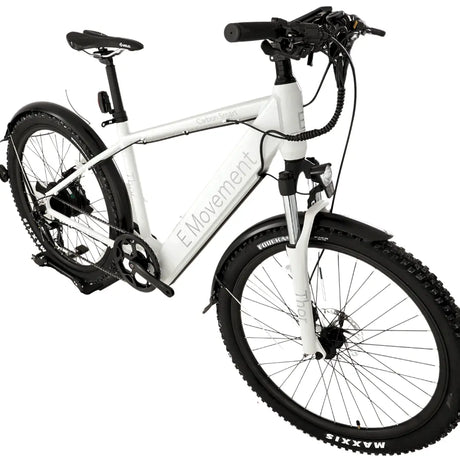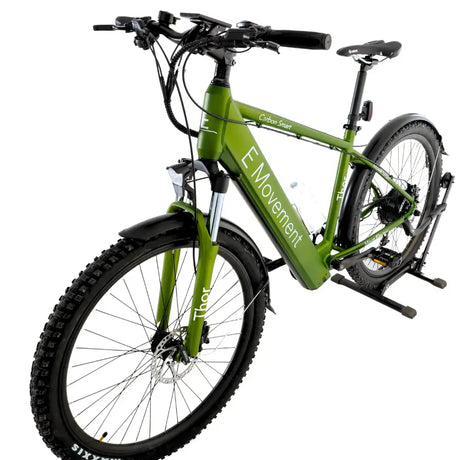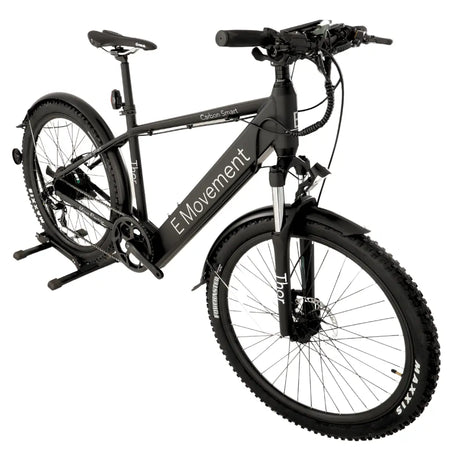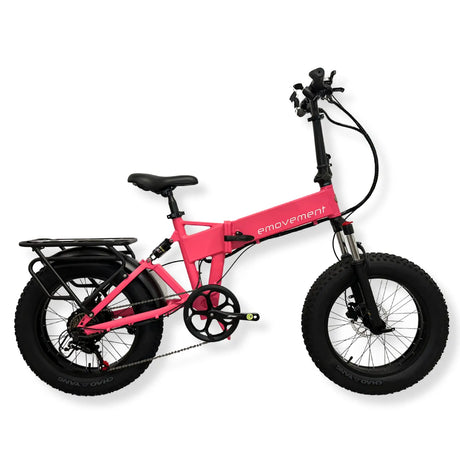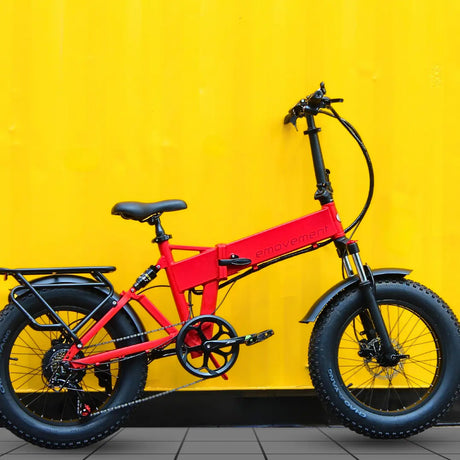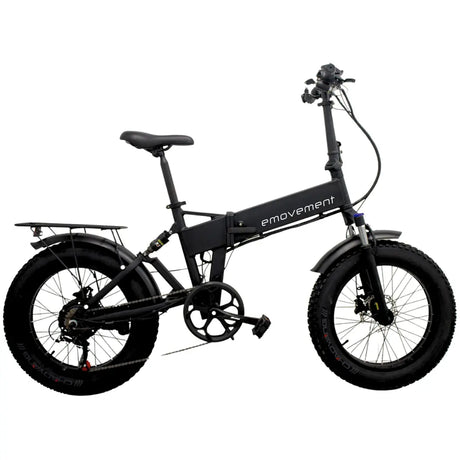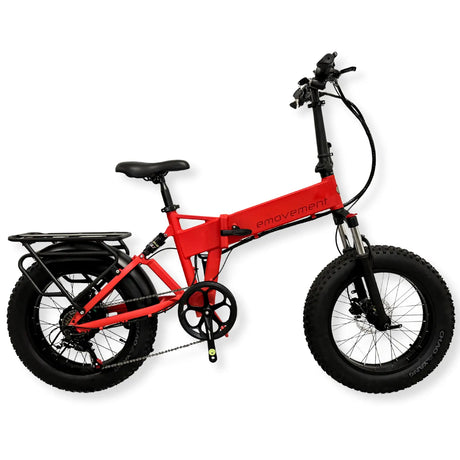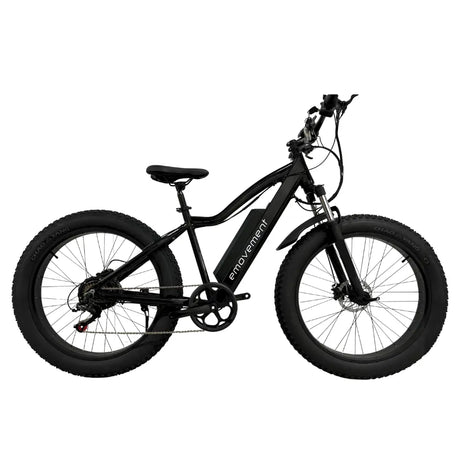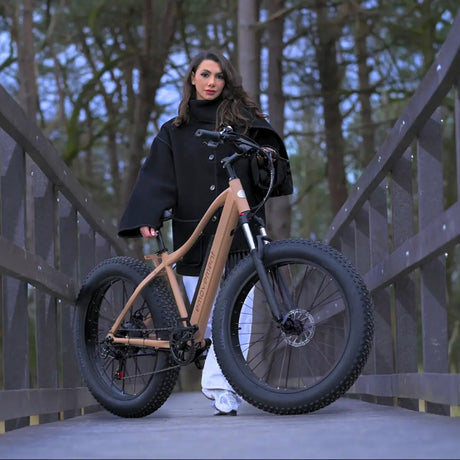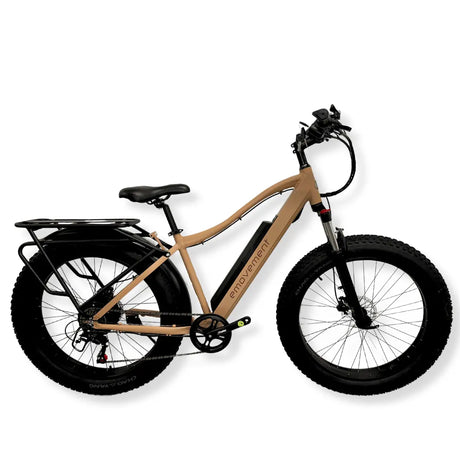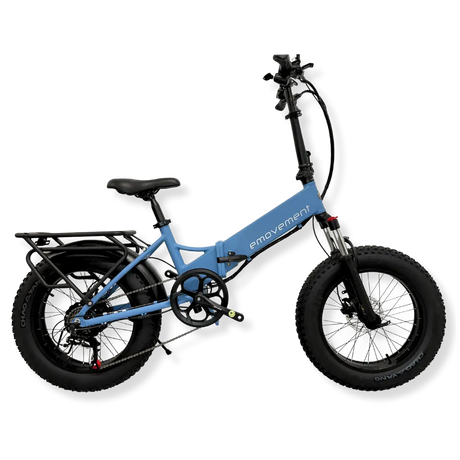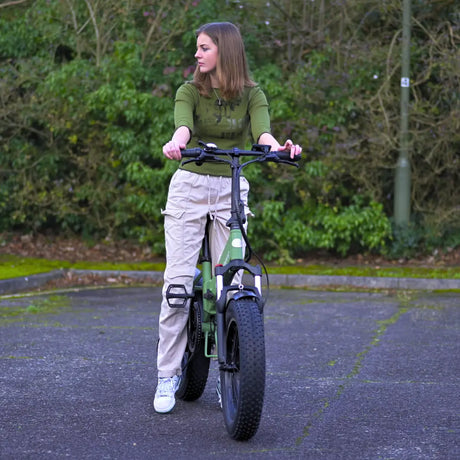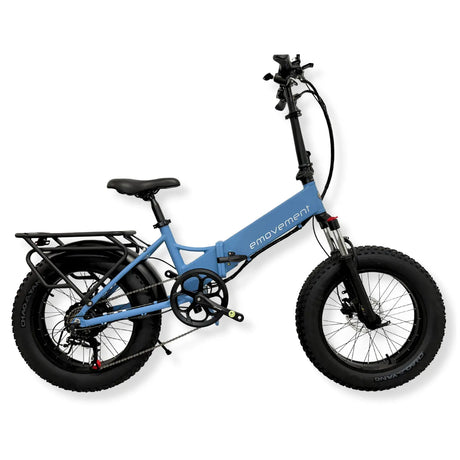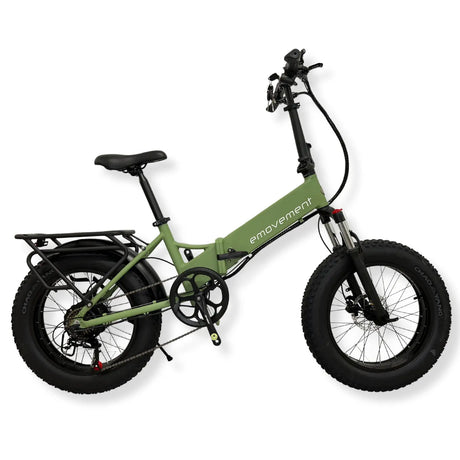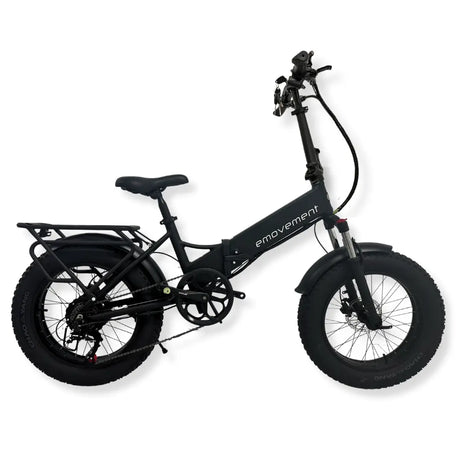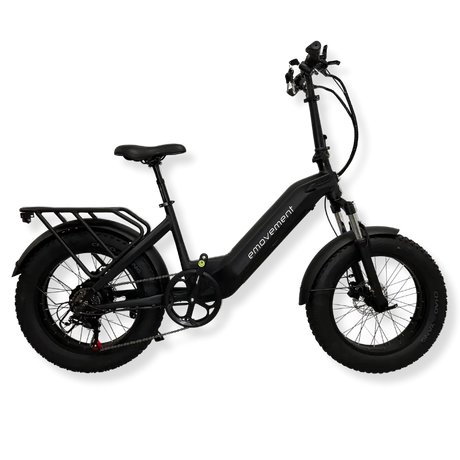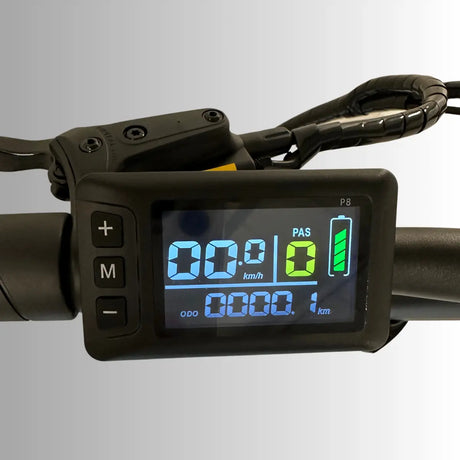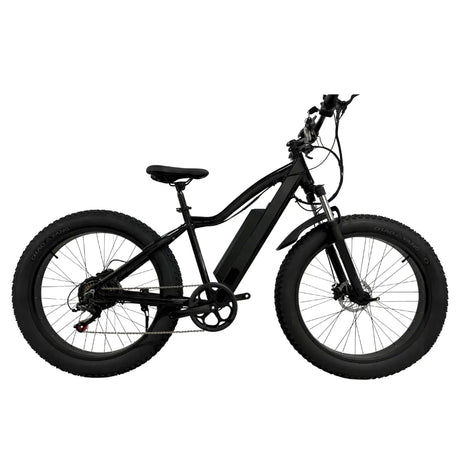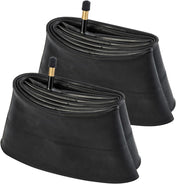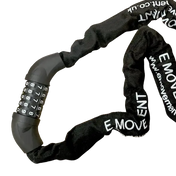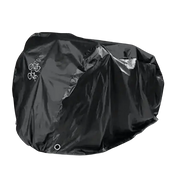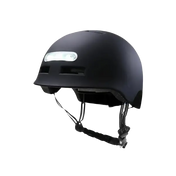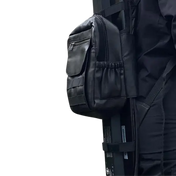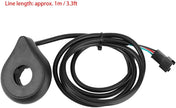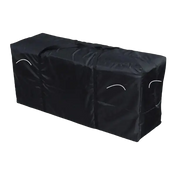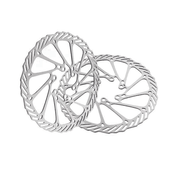Inside this Article:
- A Cost Analysis of E-Bike Conversion Kits
- Initial Investment
- Long-Term Savings
- Comparing Costs with Pre-built E-Bikes
- Comparing Costs with Professional E-Bike Conversion
- Performance Comparison of DIY Kits, Professional Conversion, and Pre-built electric bikes
- The Installation Process - How Technical Is It?
- Environmental Impact
- User Experiences
- Choosing the Right E-Bike Conversion Kit
- Top-Rated E-Bike Conversion Kits
- Pros and Cons Overview
- Conclusion
- FAQs
Electric bikes have transformed urban mobility , offering a sustainable alternative that combines the benefits of traditional bicycles with the convenience of motorised transport. Luckily, if you’re not ready to purchase a brand-new e-bike, a conversion kit provides an effective solution. By converting your standard bike into an electric powerhouse, you can enjoy the perks of electric bicycles without the hefty price tag.
Whether you're a daily commuter looking to ease your ride or a weekend adventurer seeking extra miles, you’ll find switching to electric bikes a dream come true. However, you must be asking yourself whether you should convert your existing bike to an ebike through a DIY conversion kit, get a professional bike-to-electric-bike conversion, or buy a pre-built ebike. Are eBike conversion kits even worth it?
Keep reading as we compare these options for you
A Cost Analysis of E-Bike Conversion Kits
Exploring the economic side of converting your traditional bicycle into an e-bicycle is crucial before you decide to make the transition:
Initial Investment
The cost of an electric bike conversion kit can vary significantly based on the quality of components and the technology level:
- Conversion Kit: Prices for basic models start at approximately £250 and can go up to £1,200 for advanced kits that feature powerful motors and batteries with extensive ranges. These kits can transform almost any bicycle into a high-performance e-bike, allowing for a customised setup tailored to your specific riding needs.
- Installation: If opting for professional conversion kit installation, costs can range between £50 to £160. The complexity of the bike and the kit’s design can influence this price. Choosing a professional installation ensures that all components are properly set up for optimal performance.
- Additional Accessories: Extra expenditures might include £80 for an upgraded braking system, around £40 for a more robust bike rack, and up to £120 for a high-quality, comfortable seat. Such accessories not only enhance the comfort and functionality of your converted electric bike but also contribute to safety and durability.
Long-Term Savings
Opting for an e-bike conversion can lead to considerable savings, particularly if you use your bike for commuting and running errands:
- Fuel Costs: Switching to an electric bike for daily commutes can save up to £400 to £800 annually in fuel and parking fees, depending on local rates and usage patterns. This shift reduces direct expenses and minimises your carbon footprint.
- Maintenance: The average annual maintenance cost for an e-bicycle is around £80, compared to £240 for a car. E-bikes require less frequent major repairs, which translates to lower overall maintenance expenses. Additionally, they are less likely to incur costly mechanical issues due to their simpler design.
- Health Benefits: Regular physical activity, such as biking, is associated with reduced long-term healthcare costs, potentially saving hundreds annually by decreasing medical visits and chronic illness management. Riders can also benefit from enhanced well-being and productivity .
However, note that an electric bike conversion kit may not work smoothly enough to last you for a very long time, which is where professional ebike conversion comes in.
Comparing Costs with Pre-built E-Bikes
Considering whether to purchase a conversion kit or a new electric bike involves several cost-related factors:
- Upfront Cost: New e-bicycles are priced from £800 to over £6,400 for premium models. A mid-range one averages around £2,000. In contrast, upgrading a high-quality bike with a conversion kit might total approximately £150 to £300, offering a much more affordable entry point into the e-bike world with similar performance benefits.
- Features and Performance : Pre-built electric bikes typically offer advanced integrated features and come with warranties that can add value, while conversion kits provide customization but may require more maintenance effort. The ability to select specific components allows for a more personalised vehicle you can adjust to meet individual needs and preferences.
- Resale Value: If well-maintained, factory-built e-bikes tend to retain a higher resale value, often up to 50% of the original price. Converted bikes, on the other hand, might depreciate more quickly. Still, the initial lower investment in a conversion kit may balance out this factor, making it an attractive option for those not concerned with resale potential.
Comparing Costs with Professional E-Bike Conversion
Determining whether to opt for a DIY electric bike conversion kit or professional conversion services can be a difficult decision. For this reason, you should consider the following financial and practical aspects:
- Upfront Cost : The initial expense for a professional e-bike conversion includes the cost of components and the service fee charged by the professional. While DIY kits might range from £150 to £300, professional services can range from £500 to £1,000, depending on the installation complexity and the quality of the components used. Note that professional conversion also entails adding controllers, PAS systems, and throttles unlike the relatively simple components of regular DIY kits.
- Quality of Installation: Professional bike conversions ensure that the bike is optimally set up for performance and safety. Experts have the technical skill to properly integrate the motor, battery, and controller with the existing bike system, which leads to a more reliable and efficient setup than a typical DIY project. In fact, this process is identical to the one used by factories to manufacture electric bikes, so the quality will be higher than any DIY kit you attach.
- Warranty and Support: Choosing the professional process usually comes with the added benefit of warranty and support for the installation. Riders can enjoy peace of mind knowing that any issues related to the conversion process or initial setup might be resolved without additional costs. In contrast, DIY kits typically only cover the hardware, and any mistakes made during installation could lead to extra costs down the line.
- Time and Convenience: The convenience of having an expert handle the conversion is a significant advantage. It saves time and the hassle of understanding intricate electronic and mechanical systems, which can be daunting for those who are not mechanically inclined. Professional installation can be completed quickly and efficiently, allowing you to enjoy your upgraded bike sooner.
- Resale Value: Like pre-built electric bikes, professionally converted bikes might maintain a better resale value compared to those converted at home, particularly if the conversion is done cleanly and with high-quality components. The professional installation can also be a selling point, as it assures potential buyers of the bike’s reliability and performance.
Performance Comparison of DIY Kits, Professional Conversion, and Pre-built electric bikes
When considering the shift to an electric bike via a conversion kit, it's vital to evaluate the performance outcomes such as speed, power, battery life, and how well the bike can handle various terrains:
Speed and Power
Speed and power are critical factors for many cyclists, especially when tackling challenging terrains or needing quick acceleration.
- Converted E-Bikes: DIY Conversion kits can significantly boost the speed and power of a traditional bicycle. They typically enable speeds up to 32-45 kph, depending on the motor wattage and local regulations. The addition of a motor provides a remarkable increase in acceleration and hill-climbing capabilities, making it comparable to many pre-built e-bikes.
- Pre-built E-Bikes and Professional Conversion: Generally, pre-built electric bicycles are designed with optimised motor and battery integration, which often allows for smoother and safer acceleration and more consistent power output. Manufacturers might also offer models with higher power motors that exceed the typical conversion kit capabilities, especially in premium e-bikes.
Battery Life and Range
The distance an electric bike can travel on a single charge is a major consideration for riders looking at longer commutes or extended tours.
- Converted E-Bikes: The range of a converted bike is largely determined by the battery size selected during the conversion process. A standard conversion kit battery might offer anywhere from 30 to 60 kilometres per charge. Battery performance can vary based on how much the rider relies on motor assistance versus pedalling.
- Pre-built E-Bikes and Professional Conversion: These often come with high-grade batteries that are specifically designed to complement the motor and other bike systems. In some high-end models, you can even obtain ranges exceeding 130 kilometres on a single charge. The integration also tends to be more seamless, potentially offering greater efficiency and longer battery life.
Terrain Adaptability
How well a bike handles different types of terrain can greatly affect a rider's experience and comfort.
- Converted eBikes and Professional eBike Conversion: This bike’s adaptability to different terrains can depend greatly on the type of conversion kit used and the original bicycle's specifications. For example, converting a mountain bike with a decent motor and battery setup can get you to a powerful off-road e-bike capable of handling rugged trails. Rear-hub and mid-drive conversion kits are safer and easier to handle than front-hub kits.
- Pre-built eBikes: Many pre-built electric bikes are specifically designed for certain types of terrain. E-bike manufacturers might offer models with features such as full suspension and fat tyres for off-road use, or sleek, lightweight frames designed for urban environments . These specialised designs often provide optimised performance and comfort for the intended use.
The Installation Process - How Technical Is It?
Transitioning to an e-bike using a conversion kit involves an installation process, differing in complexity based on the kit and the existing bike:
DIY vs. Professional Installation
You will have to choose whether to install the kit yourself or hire a professional, as your decision can impact both the initial cost and the quality of the conversion:
- DIY Installation: This option appeals to those who are handy and enjoy DIY projects. It allows for a deeper understanding of your bike’s mechanics and can be more cost-effective, saving you the typical $50 to $200 installation fee. However, it requires a good level of mechanical skill and an understanding of electrical systems. If you don’t have prior experience in bike mechanics, DIY installation might not be suitable for you.
- Professional Installation: Opting for a professional ensures that the conversion kit is installed correctly and safely. It's particularly advisable when the kit involves complex electrical wiring or the bike's design complicates the installation process. Professional help can also prevent potential issues that might arise from an incorrect setup and offer a warranty on the installation work.
Environmental Impact
In general, electric bikes come with many benefits. They can help reduce traffic congestion in urban areas by taking up less space than cars. Cyclists contribute to lower overall vehicle emissions and a more pleasant urban environment. They also have lower emissions and are energy efficient. Beyond environmental health, electric bikes promote physical health through active transportation and reduce the societal impacts of sedentary lifestyles.
Electric bikes have also made cycling accessible to a broader range of people, including those who may find traditional biking too strenuous. Consequently, an increasing number of people can opt for this eco-friendly mode of transport.
Let’s compare the environmental impact of conversion kits, converted ebikes, and pre-built ebikes
- Conversion Kits : Using a conversion kit involves upgrading an existing bicycle, thus reducing the demand for new raw materials and energy required to manufacture a completely new electric bike. This approach minimises waste and leverages the lifespan of already-produced bikes, which is more sustainable.
- Professionally Converted E-Bikes: Professionally converted e-bikes have all the advantages of using electric bike conversion kits. However, they are even more environmentally friendly because here, electric bike conversion kits are not being mass-produced, and only made per demand. Note that as professionally converted electric bikes also have a longer lifespan Many DIY conversion kits, they help with efficient resource allocation
- Pre-Built E-Bikes: Manufacturing a new electric bike requires significant amounts of raw materials and energy. Although these bikes often incorporate the latest energy-efficient technologies, their full production cycle tends to have a higher carbon footprint due to material extraction, manufacturing, and transportation. They are also mass produced often. (Which is why we always recommend purchasing from small local businesses that have carefully curated collections rather than stocking thousands of me-too models)
User Experiences
Investing in an electric bike conversion kit can dramatically change your cycling experience. Let’s now consider what users have to say about their adventures and whether ebike conversion kits are worth it :
Many users express satisfaction with the increased range and reduced effort required for commuting or recreational rides. Some encounter issues such as fitting the kit components to older bikes or adjusting to the increased weight and speed, and many note problems with the range of their new ebikes. Many highlight the cost savings over purchasing a brand-new electric bike, appreciating the value added to their existing bicycle.
The aspects of comfort and convenience are significantly enhanced with an ebike conversion kit. Features like throttle and pedal assist can make it easier to start from a stop and help maintain a steady speed. This reduces physical strain on longer rides or when carrying loads.
Users often find that the motor assistance helps them tackle routes that were previously challenging, making cycling a more enjoyable and less daunting option. The convenience of being able to switch between powered and manual modes adds flexibility to their travel.
Handling and Ride Quality
The impact of an electric conversion on handling and ride quality can vary depending on the type of kit and the original bike’s design:
The addition of a motor and battery often changes the bicycle’s weight distribution, which can affect handling. Riders generally adapt quickly to these changes and appreciate the enhanced capabilities, especially on hills and rough terrain. Many users report improvements in ride quality, as the assist allows for smoother acceleration and easier handling over different surfaces.Enhanced control features, such as responsive pedal-assist systems and intuitive display units, contribute to a more connected and enjoyable riding experience.
However, it's important to ensure that the bike’s brakes and suspension are upgraded if necessary to cope with the increased speed and weight for optimal safety and performance.
Choosing the Right E-Bike Conversion Kit
Embarking on the journey to electrify your ride requires careful consideration of various factors so that you can select the right electric bike conversion kit for yourself:
When navigating the multitude of options available, several key factors should guide your decision-making process:
Compatibility with Different Bikes
Conversion kits are designed to be as universally compatible as possible, but there are still considerations based on the type of bicycle:
- The kit needs to physically fit the frame, which can vary widely among road bikes , mountain bikes , and hybrids . Certain kits are better suited for specific frame designs, and some may require additional mounting hardware.
- Kits are available for both front and rear wheel drives and can usually be installed without altering the bike’s existing drivetrain. This flexibility means that whether you have a single-speed bike or a multi-gear bicycle , there's likely a conversion kit that will fit.
- Most kits are compatible with common wheel sizes, but it's crucial to choose a kit matching your bike's wheel dimensions to ensure proper fit and function.
Desired Speed and Power
Determining your desired speed and power requirements helps narrow down the options to find a conversion kit that meets your performance expectations:
- Assess the motor's wattage and voltage to determine its power output and suitability for your desired riding experience.
- Determine whether you prioritise high-speed performance for commuting or leisure riding, and select a kit with appropriate speed capabilities to meet your needs.
- Evaluate the motor's torque output, especially if you'll be riding in hilly terrain or carrying heavy loads. This will enable you to choose adequate power delivery for smooth acceleration and climbing.
Terrain and Typical Use Cases
Considering the terrain you'll be riding on and regular usage patterns help tailor conversion kit features to suit your specific riding environment and preferences:
- Select an e-bicycle conversion kit with features that optimise your intended riding environment, whether it's flat city streets , gravel paths, or rugged off-road trails.
- Choose a kit with a battery capacity that aligns with your typical riding distance and duration to ensure sufficient power for your adventures.
- Look for conversion kits with multiple assist modes or adjustable power settings. You can then adjust the assistance level to your riding style and energy expenditure.
Top-Rated E-Bike Conversion Kits
Discovering the top-rated electric bike conversion kits unveils exciting options that blend performance, reliability, and affordability:
Reviews of Popular Models
In the UK, several e-conversion kits have gained popularity among riders:
- Swytch E-Bike Conversion Kit: The Swytch kit is praised for its ease of installation and versatility, allowing riders to convert almost any bike into an electric one. Users appreciate its compact design, lightweight battery, and responsive assistance. However, some reviewers note concerns about the limited range and power output compared to more premium options. Despite this, it remains a favourite for its accessibility and affordability, particularly for urban commuters and casual riders.
- Bafang BBSHD Mid-Drive Conversion Kit: Highly regarded by electric bike enthusiasts, the Bafang BBSHD kit offers robust performance and exceptional torque. Its mid-drive design provides a balanced weight distribution and efficient power delivery, resulting in a smooth and responsive ride even on steep hills and challenging terrain. Expert recommendations often highlight the Bafang BBSHD kit for its reliability, power, and compatibility with a wide range of bikes, like fat tyre ones .
- Tongsheng TSDZ2 Mid-Drive Conversion Kit: Another popular choice among UK riders is the Tongsheng TSDZ2 kit, known for its smooth power delivery and affordable price point. With its mid-drive configuration, it offers excellent efficiency and torque and is suitable for various riding conditions. Users appreciate its quiet operation and seamless integration with existing bike components, making it a top choice for both commuters and recreational cyclists.
Pros and Cons Overview
Conversion kits offer an appealing alternative to buying a new electric bike, but like any choice, they come with their own set of advantages and disadvantages:
Advantages of Ebike Conversion Kits
E-bike conversion kits have several benefits that make them an attractive option for many cyclists:
- Cost-Effective: Generally, these kits are more affordable than purchasing a brand-new e-bike, making them an economical choice for upgrading an existing bicycle.
- Customization: They allow for significant customization in terms of power, range, and aesthetics. Riders can tailor their setups based on their specific needs and preferences.
- Sustainability: If you want to align your lifestyle with eco-friendly practices, a conversion kit is the way to go. Converting an existing bike helps reduce waste by repurposing it into a modern, efficient mode of transport.
- Learning and Engagement: Installing a conversion kit can be a rewarding DIY project that increases the owner's understanding and appreciation of their bike’s mechanics and capabilities.
Limitations and Drawbacks
There are also several limitations to consider before deciding on an electric bicycle conversion kit:
- Compatibility Issues: Not all kits will fit all types of bikes, and some bicycles may require significant modifications or might not be suitable for conversion.
- Performance Variances: While many high-quality kits perform decently, they can still fall short of the integrated design and optimization of a purpose-built electric bike. They also often lack a controller and gears, providing a rather rudimentary conversion as compared to professionally built or converted electric bikes.
- Aesthetic Impact: Some kits may alter the look of the bike, potentially making it appear cluttered with visible wires and bulkier components.
- Weight Distribution: Adding a conversion kit can change the weight distribution of the bike, ultimately affecting its handling and ride quality.
Overall Assessment
The decision to opt for a conversion kit or professional ebike conversion over a new e-bike often boils down to a few key considerations:
If cost is a primary concern, DIY conversion kits typically offer a more budget-friendly way to access electric biking. For those who are particularly attached to their current bike and its feel, converting it may be preferable rather than adjusting to a new one. Conversion kits also provide a fun and engaging project if you enjoy customising and tinkering with your vehicle. Riders who prioritise environmental impact may find that reusing an existing bike through conversion aligns well with sustainable values.
Our Verdict : If you want to upgrade your existing bike in a manner that gives the best performance, we’d recommend a professional bike to electric bike conversion over a DIY ebike conversion kit. It’s cheaper than getting a new electric bike and much more robust than a crude piece of machine. You can learn more about our conversion services here.
Conclusion
Ebike conversion kits are cost-effective, have customization potential, and provide compelling options for both new and seasoned cyclists looking to enhance their riding experience. Despite some challenges such as compatibility issues and variable performance, the benefits of transforming an existing bicycle into a powered machine can make these kits a worthy consideration. Whether motivated by environmental consciousness, budget constraints, or love for DIY projects, electric bike conversion kits present a practical solution for entering the world of electric bicycles.
Still, keep in mind that while these conversion kits do the job, they’re not effective in the long run. It can be a crude way to convert your bike, especially if you don’t know what you’re doing. That’s why, at E-Movement, we offer professional e-bike conversion services to make sure the conversion process is seamless and stress-free for all our customers!
FAQs
1. Are ebike conversion kits legal?
Electric bike conversion kits are legal in most regions, but the laws vary depending on where you live. Generally, there are regulations regarding the maximum power output of the motor and whether throttle-assisted systems are allowed. For instance, in the UK, your electric bike conversion kit must have a motor smaller than 250W and provide electrical assisted speed below 25 km/h If you aim to use it on public property. It must also not have a throttle. Otherwise, you will have to register your newly converted electric bike as a moped, and license, tax, and insure it.
2. How much does it cost to convert a bike to electric?
If you want to convert your electric bike using a conversion kit, You will have to incur purchase and installation costs. Basic conversion kits typically start around £250, while more sophisticated systems with higher power outputs and extended-range batteries can go up to £1,200 or more. If you opt for professional kit installation, this could add an additional £50 to £160 to the overall cost.
In contrast, if you want professional bike to electric bike conversion, You could get your bike upgraded for around £500-1000. At emovement, we charge £500 to £700.
3. What tools do I need for installation?
Installing an e-bike conversion kit typically requires basic hand tools such as Allen wrenches, screwdrivers, pliers, and a torque wrench. Depending on your bike and the kit, you might also need speciality bike tools like a chain breaker, crank puller, or specific spanners. For kits with electrical components, wire cutters and electrical tape are also necessary.
4. Can any bike be converted into an ebike?
Although many bikes can be converted into electric bicycles, compatibility depends on the bike’s frame, wheel size, and existing components. Factors like the frame’s material, shape, and construction can affect whether a kit can be safely and effectively installed. It's important to verify the specifications of both the bike and the conversion kit to ensure they are compatible.
5. What maintenance is required for an ebike conversion kit?
Maintenance for an ebike conversion kit involves regular checks and care similar to a traditional bike, with added attention to the electrical components. This includes charging and storing the battery properly, checking connections and wiring for wear or damage, and ensuring the motor and controller are kept clean and dry. Regularly checking and tightening bolts and fittings, especially after the initial installation, is also crucial to maintain performance and safety.


